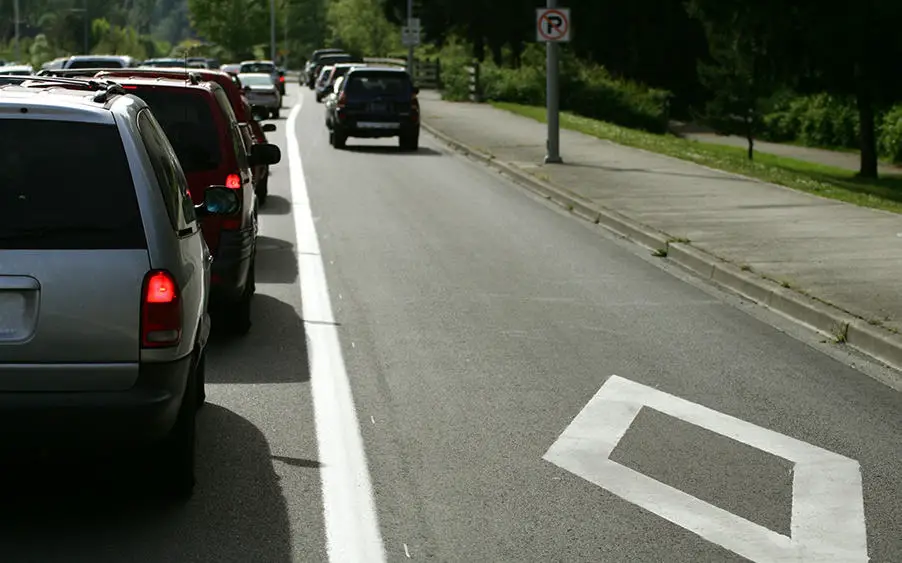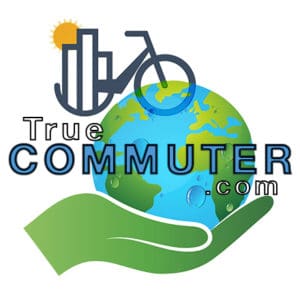
There is confusion about whether an Uber is classed as a High Occupancy Vehicle (HOV) and able to use the carpool lane. The question is whether Uber is classed as a normal private hire vehicle, and if so, can it use the priority carpool lanes. Services such as Uber and Lyft have occupied a grey area between individual car ownership and more traditional forms of public transportation like buses, taxis, and subways.
As long as the Uber is carrying the required passengers to fulfil the occupancy requirements of the specific carpool, Uber drivers are free to use carpool lanes. It is important to make sure the minimum requirements of the specific carpool lane are met which can be higher than two passengers.
As long as the minimum requirement for the number of occupants is met for the specific carpool lane, then Uber drivers can use it without any problems. It is worth noting that the minimum occupancy requirement for some lanes can be 2, 3 or even 4 individuals, including the Uber driver, so it is important to check the specific lane requirements in your area and on your route.
What is a Carpool Lane?

Carpool lanes, alternatively referred to as High Occupancy Vehicle (HOV) lanes, diamond lanes, 2+ lanes, and transit lanes or T2 or T3 lanes, incentivise people to car share more regularly, with the deterrent of fines and fixed penalties, if these lanes are used for single-occupancy (or low-occupancy depending on the rules of the specific road) vehicles. For more information on what the purpose of a carpool lane is and who can use it then we have another article for you.
Due to increased levels of traffic and the associated environmental impact it brings, many countries are introducing more and more carpool lanes to encourage increased vehicle occupancy and, hence, reduce the total number of vehicles on the road. Whilst carpool lanes are still few and far between in the grand scale of nationwide road networks, they are being introduced more and more on motorways and major arterial roads around the world.
Taking an Uber as an Alternative Commute Method
Taking an Uber with work colleagues may be a great alternative commute method if other methods are not an option due to travel distance or other personal circumstances. Sharing the cost of an Uber could well save you money over other forms of public transport and has the benefit of being door to door so a faster journey. Whilst this doesn’t remove cars from the commute, a True Commuter mission, but it does reduce cars compared to single occupancy.
Sharing an Uber with others can open up the use of the carpool lane for the driver and so maybe a great option for a more speedy commute allowing the driver to by-pass the congested traffic.
That being said, the driver can’t use the carpool lane when they are the only occupant of the vehicle, despite an Uber car being a taxi service. They can only use the lane when carrying passengers that meet the minimum occupancy requirements of the specific road. Minimum passenger numbers required to qualify for the carpool lanes do vary depending on the road you are using so it is always worth checking these requirements.
Your Uber driver should know the occupancy levels of the carpool lane and will have the responsibility to use this it within the rules of the road but it may be worth you reminding them if they stray onto a carpool lane when you don’t not meet these minimum occupancy standards. If they are pulled over by the police of highways agency it will b your journey that is disrupted even if you are not liable for any fines.
Uber Pool and Carpooling
To take advantage of this, and to encourage more people to take Uber, Uber Pool was launched by the company and boasts that it can save you over 40% of the cost of taking an Uber yourself. This starts to make this an attractive offer with your work colleagues as a method of commuting.
Before I start, I want to reassure you that True Commuter is in now way affiliated to Uber or Uber Pool. This is a personal view of the service.
Uber Pool matches you with riders heading in the same direction, so you can share the cost. Whilst your trip may take a little longer, due to the additional pick up and drop-offs, multi-occupancy advantages can then be used by the Uber driver, such as using the carpool lane, which enables them to take advantage of the lower congestion experienced in multi-occupancy lanes.
The service is fairly simple, the steps involved are discussed on the Uber Pool website and are as follows:
- Request – when you order your Pool trip, you will be asked to wait for two minutes while a nearby rider going your way is found, so you can share the cost of the trip.
- Walk – the app will direct you to a nearby pick-up point where you can meet your driver after a short walk (no more than 250 metres, or around 4 minutes).
- Ride – Uber Pool gives drivers the most direct route to each rider and their drop-off points. This means you may be also be dropped off a short distance from the final destination.
What’s more, you can request that you travel with friends, rather than Uber Pool selecting random strangers, so you can easily coordinate using this service with work colleagues living nearby and all get dropped off at the same destination, sharing the cost along the way. larger groups can be accommodated by taking Uber X or Uber XL so you can take advantage.
The idea behind these types of schemes being offered now is that they may, in the future, replace the need for individual car ownership. If these carpool services take off, with multiple passengers making multiple stops, carpools could start to look more like public transit than than the private car service and offer a real option for reducing the number of cars on our roads.
These services could, however, have a detrimental effect by encouraging people away from more mass transit offerings such as buses and trains, which would have the effect of more vehicles on the road. From the perspective of congestion and the environment, there needs to be a fine balance between the attractiveness of services, such as Uber Pool, and maintaining maximum use of mass transport methods so this has a way to go before it is an ethical option.
How to Start Carpooling with Colleagues

To start carpooling with colleagues, and using Uber as a carpool option, you just need to find someone to carpool with who wants to use the same method.
The simplest way to do that is to ask around your workplace. Does anyone who lives with you wish to carpool? Some companies offer databases of people who want to start to carpool. If your company doesn’t have this then why not start one? This can be a simple excel sheet where people register their interest in carpooling, you can download our carpool register here and use within your organisation!
If, for whatever reason, you can’t find anyone to carpool with, then you can use Uber Pool to find a carpool ‘friend’. You will need to make sure you are comfortable being paired to a complete stranger in this case but it can be a really useful option for sharing your journey and, who knows, you may make a new friend after all.
Summary
Uber drivers CAN take the carpool lane if the number of occupants in the vehicle meets or exceed the required number of the specific lane and road. If not, then they can’t, simple. When it comes to carpool lanes, an Uber driver not meeting the multi-occupancy requirements is just like any other road user.
Make sure you know the requirements of the road and if you meeting the occupancy requirements, remind your driver that they can go in the ‘quiet’ lane and hopefully get you to your destination faster. If you regularly use Uber, then we encourage you to try Uber Pool to reduce the number of trips and do your little bit to help the environment.

